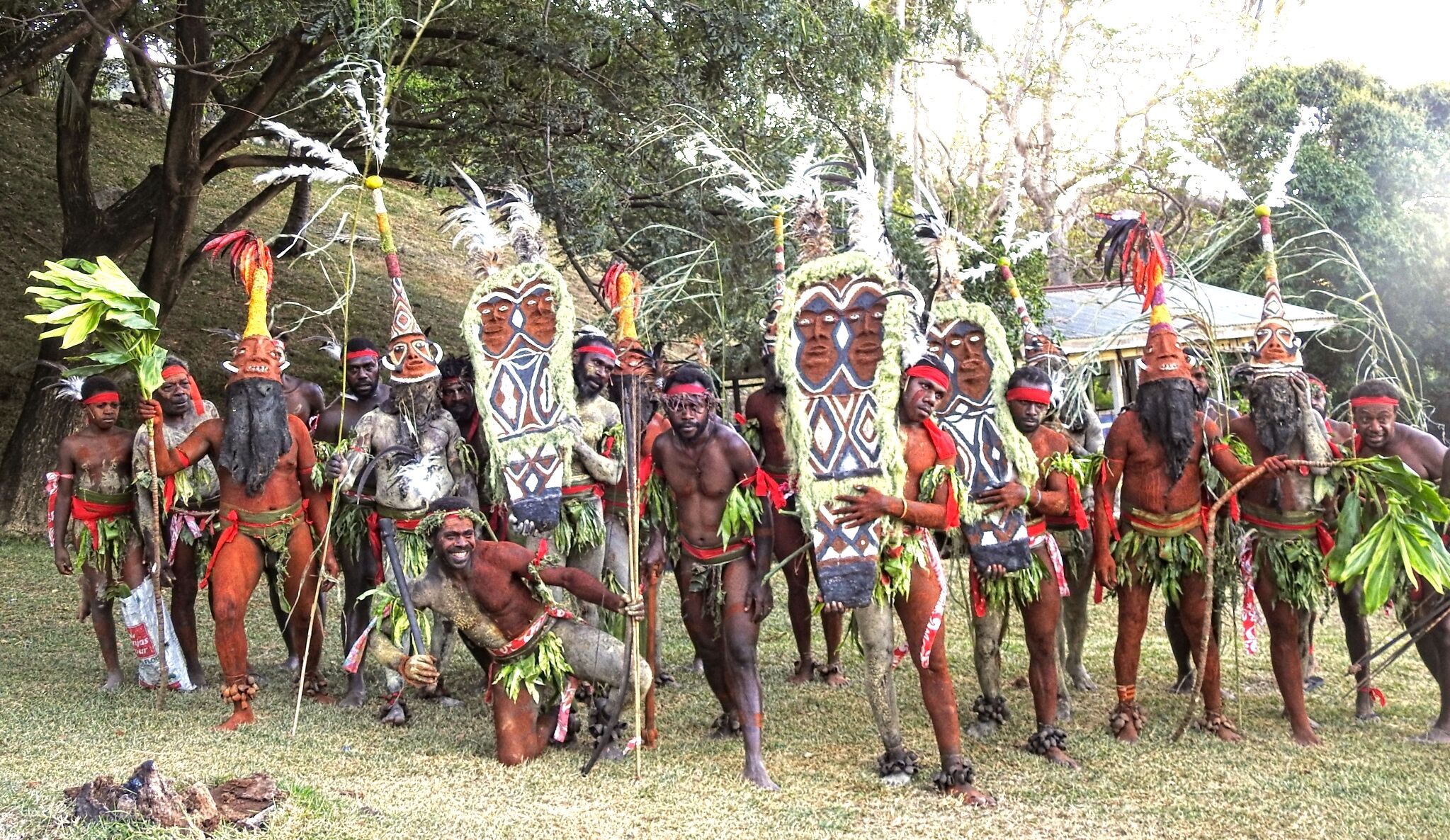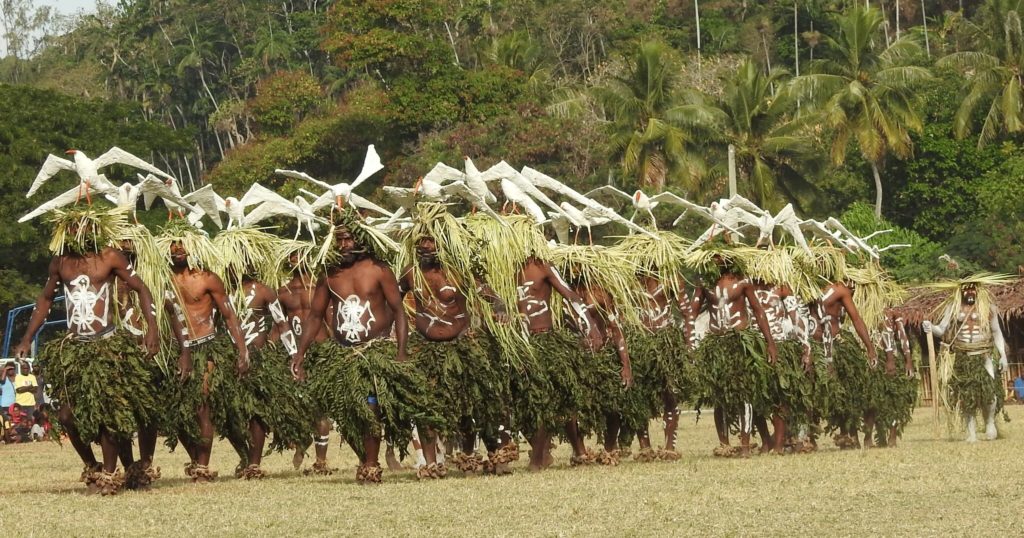Play
The Art Of Dance Festival fun on Malekula
Alex Bortoli reports on one of the Pacific’s most original festivals in celebration of traditional customs and culture which he finds a truly breathtaking and awe-inspiring experience.
December 14, 2019
Pacific Island Living
December 14, 2019Nearly a thousand performers from just about every large island in Vanuatu converged on Malekula recently for the ultimate ‘kastom dance off’ as part the Fourth National Arts Festival. This was an event ten years in the making and it didn’t disappoint. From the incredible masks and costumes to the passionate dancing and story-telling, the festival proved without doubt that Vanuatu kastom and culture is not only alive and flourishing but perhaps among the most unique and colourful in the world.
In fact, it seemed altogether fitting the organisers chose Malekula as the host venue for the festival, given the island (Vanuatu’s second largest) has more kastom languages per capita than anywhere else on Earth.
The opening parade and ceremony set the tone for the week-long festival with hundreds of dancers and participants converging on Lakatoro’s main showground, in a powerful display of singing, chanting, tam tam drumming and national pride. The sheer force of literally thousands of feet enthusiastically pounding the ground set off earthquake-like tremors along the parade route and resulted in a sonic wall rising to the heavens (thanks to the dozens of seed rattles tied around their ankles). A truly breath-taking and awe-inspiring experience.
“It made my heart sing with pride when I saw this parade and so many dancers performing together here on Malekula,” said Chief Owen Rion Lapuenmal, who presided over the opening ceremony and is the chairman of the National Arts Festival as well as the chairman of the Island Council of Chiefs on Malekula
“Organising and hosting a National Arts Festival is incredibly important to the people of Vanuatu and to my people here in Malekula because there are many kastoms and ceremonies that are being lost or forgotten and this is one way to revive them,” he said.
“The festival reminds us of the value of kastom in our community, it teaches respect of our elders, of traditions, of our ancestors and the environment around us. By hosting events like these, we can encourage our villages and chiefs to continue practicing and teaching kastom to the younger generation.”

Perhaps one of the most uplifting and moving displays at the festival was a series of dances performed by the students of the Lycee LAB French school based in Port Vila. Not only did the students prove their passion for kastom but they also made a direct appeal to Prime Minister Charlot Salwai (who was in attendance at the festival) to include kastom teachings in the classrooms around the nation. They even convinced him to join them in a kastom dance.
Not to be outdone, the incredible ‘mudmen’ tribes from around Malekula also put on a display worthy of the Prime Minister’s approval, with spectacularly painted mud masks, shields, ornately decorated clubs and colourful body paint. As one visitor pointed out, they literally looked like they’d stepped out of the pages of a National Geographic magazine.
Another crowd favourite was a group of around 20 dancers from the village of Vinmavis, on the west coast of Malekula, who decorated their bodies with white paint and covered their heads in stunning grass ‘nests’ adorned with giant papiermâché- like seabirds. The wings of the seabirds cleverly flapped along in time to their dancing and music and earned them a standing ovation from the huge local crowd.
The title of most colourful mask however belonged to the dancers from Uripiv Island (just off Malekula). Their crazy triangle-shaped and feather-covered creations (some in the shape of mystical animal spirits) combined with their outrageous body paint proved to be a show-stopper in the latter half of the festival.

Other highlights included displays of traditional weaving and food preparation, outrigger canoe racing and a recreation of inter-island canoe trading with a sailing canoe race from the Maskelyne Islands to Lakatoro (a 16-hour overnight marathon). “Vanuatu is a special place, it’s one of only a few places left on Earth where you can still experience these kinds of ancient and unique kastom ceremonies and dances being performed, not for tourists but for ourselves,” said Richard Shing, director of the Vanuatu Cultural Centre and a trained archaeologist.
“Ours is a living culture, it is part of our way of life … and like any culture it is evolving and changing and adapting. But we are very proud of our origins and our heritage … and we are working hard to make sure it continues to be passed on.
I believe we have a Government that is committed to what we are doing here and to cultural education for our future generations.” Vanuatu is currently considered to be one of the most culturally diverse countries on earth, with a population of around 230,000 and over 113 distinct languages (including dozens of dialects). The next National Arts Festival will be held on the island of Tanna in five years’ time.
© 2024 Pacific Island Living Magazine all Rights Reserved
Website by Power Marketing